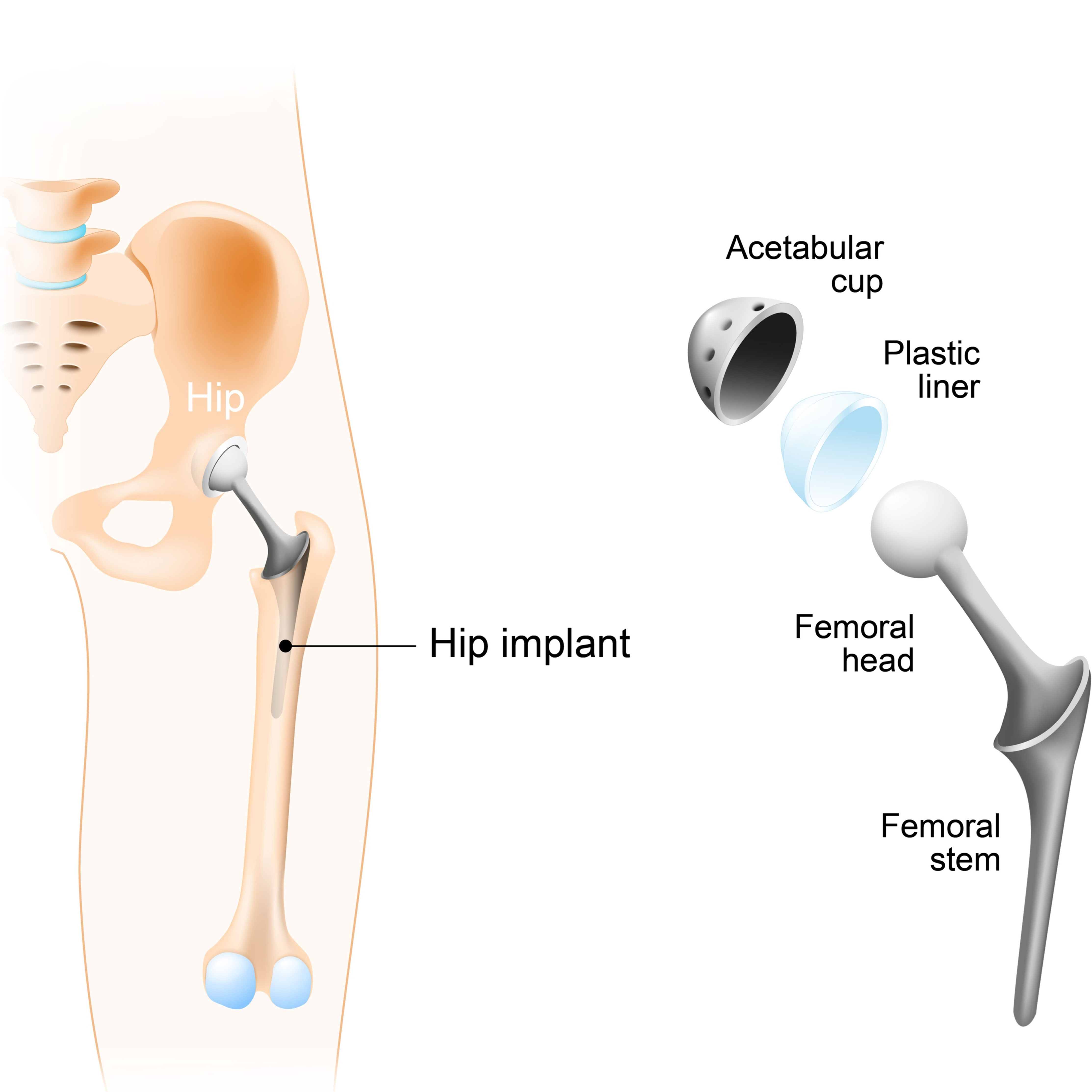Complete Revision Hip Replacement Surgery
Revision hip surgery is a procedure performed to replace a previously implanted artificial hip joint. This type of surgery is typically necessary due to complications or failure of the original hip replacement. It is a complex surgical procedure that aims to address issues that have arisen since the initial hip replacement surgery.
Commonest reasons for revising the hip replacement include:
1. Aseptic loosening (wear and tear of the hip replacement with loosening)
2. Infection
3. Dislocation
4. Leg Length discrepancy
5. Fracture around the hip joint
6. Persistent pain
Symptoms
The most common scenario is that your artificial hip has been functioning well for quite some time, but gradually starts giving you problems like discomfort, instability, pain, etc.
Occasionally, some patients may develop dislocation following hip replacement surgery. If you get recurrent episodes of hip dislocation, further procedures can be considered.

Revision Hip Surgery
Revision Hip surgery generally involves removing some or all of the old components of your hip replacement, followed by re-implantation of new implants.
Careful pre-operative planning is performed in each individual case and the type of new hip replacement determined accordingly.
Risks and Benefits
Overall, revision hip replacement is a reasonably successful operation in modern-day surgery. In my practice, the success rate of a revision hip replacement is 85% or higher. This does vary on a case-by-case basis and I will be happy to discuss this with you during the consultation.
Risks of revision hip surgery are similar to that of total hip replacement but are slightly higher. These include infection (around 2-3%), bleeding, DVT (clots in your leg), PE (clots in your lung), stiffness, loosening, wear, persistent pain (around 1%), medical and anesthetic complications. Precautions order taken to minimize all the above risks e.g. use of antibiotic prophylaxis and specialized laminar airflow theatres to minimize the risk of infection, use of blood-thinning medications, and mechanical methods to reduce the risk of clots, etc. Post-operative exercises are extremely important to decrease the risk of post-operative stiffness.
Rehabilitation and Recovery
You are generally admitted to the hospital on the day of surgery. The average length of a stay in the hospital is 5-7 days. During the hospital stay, a multi-disciplinary team including an orthopaedic team, ward doctor, nursing staff, physiotherapist, and occupational therapist, treats you. Once you and the team are happy with the progress, you are discharged from the hospital.
Post-operative mobilization includes the use of walking aids like walkers or crutches, to begin with. You can subsequently use the walking stick/s until independent mobility can be achieved.
You can expect some swelling and redness around the wound and of the lower leg for a few weeks. Generally, by 12 weeks, functional recovery can be expected in most patients. Most patients can expect to drive around 6 to 8 weeks mark.
Copyright by FUW 2017-2024. All rights reserved.
